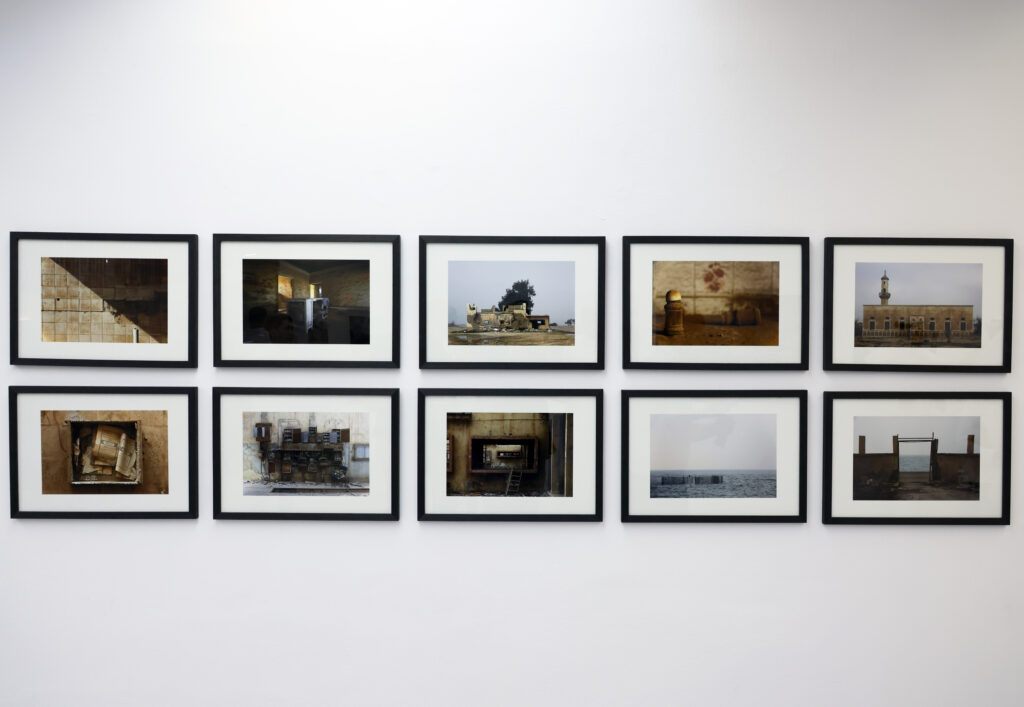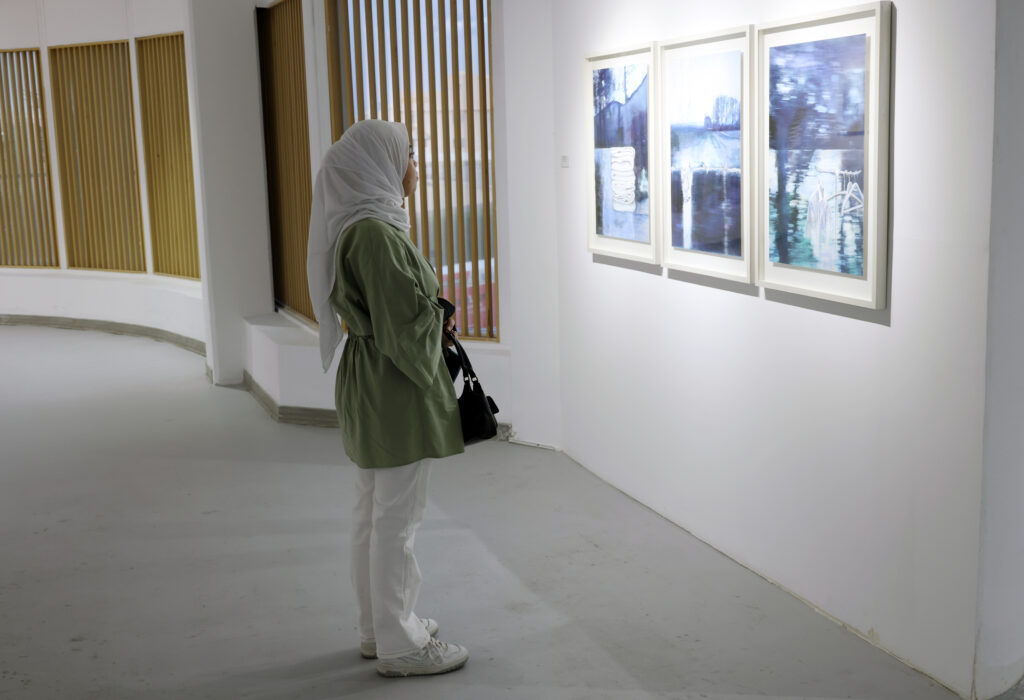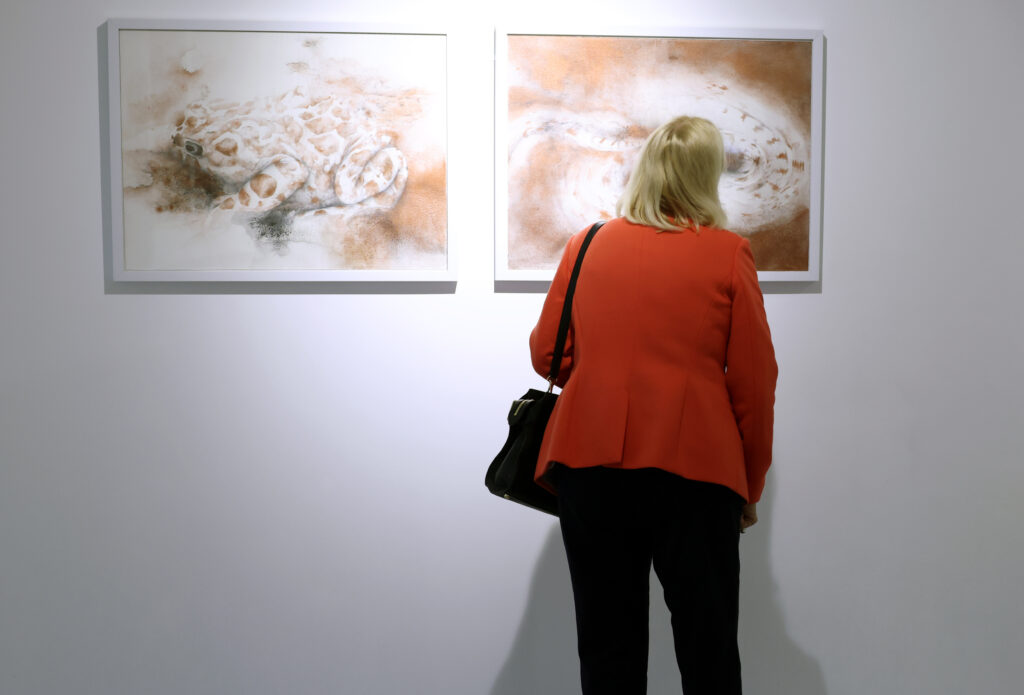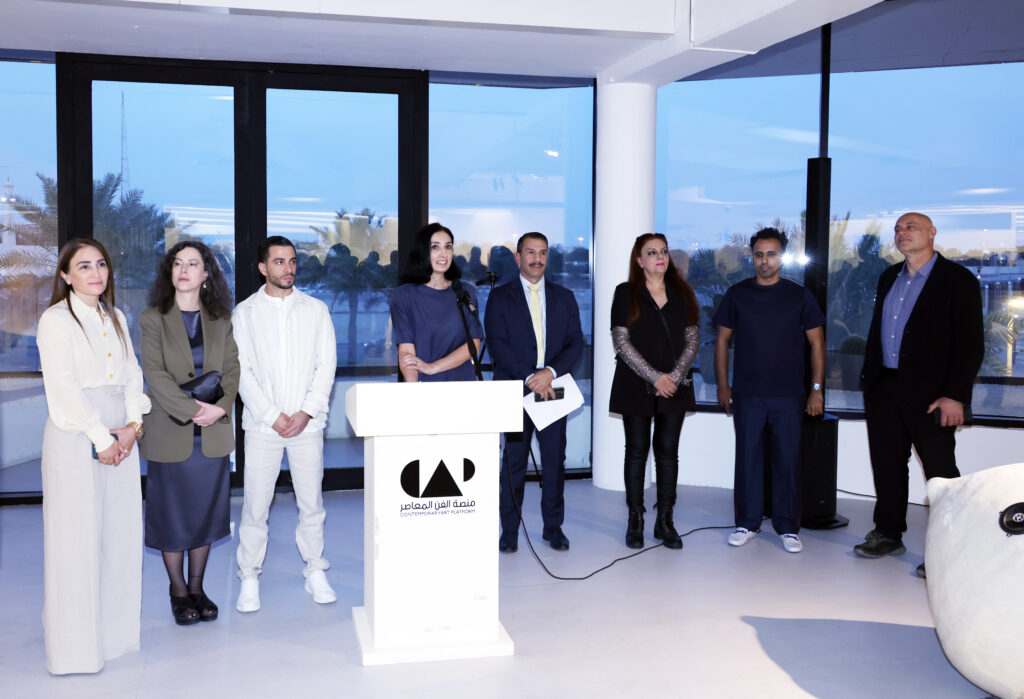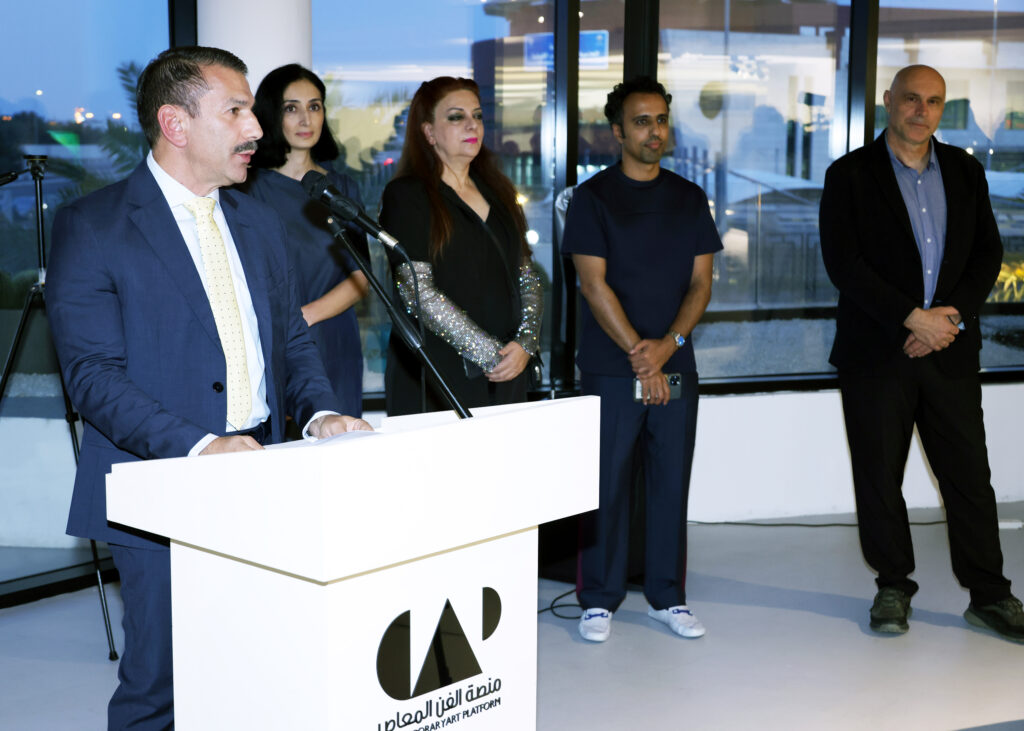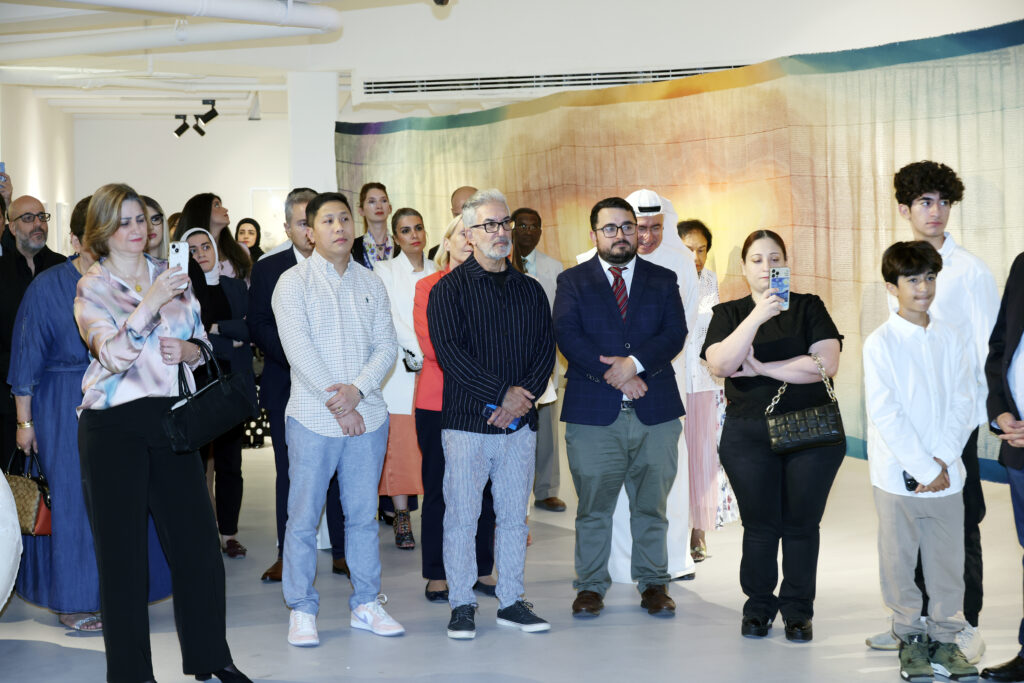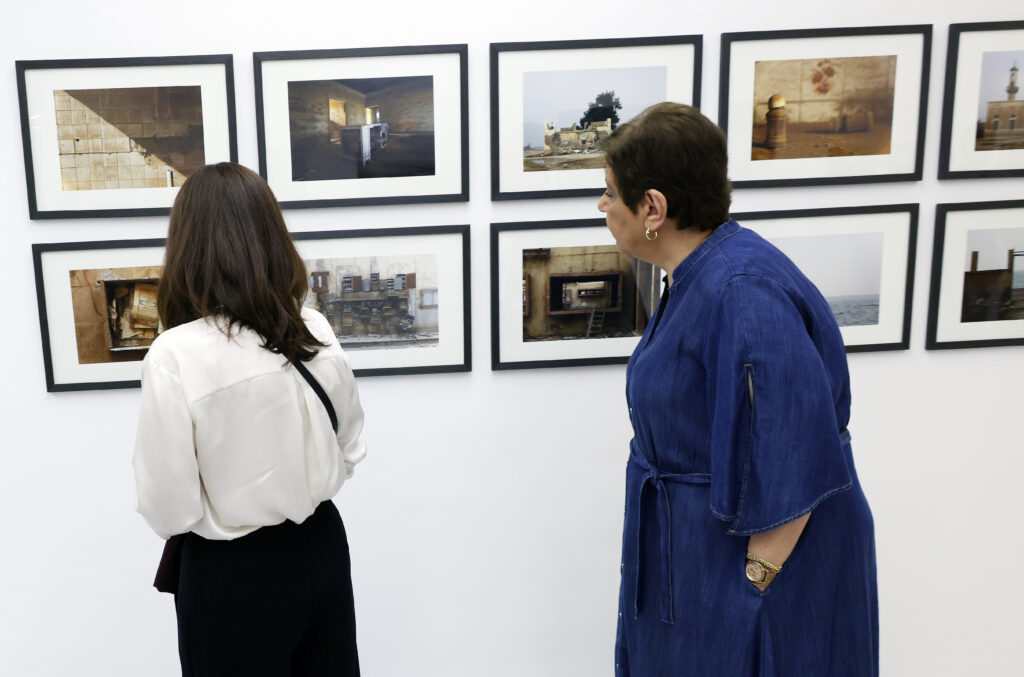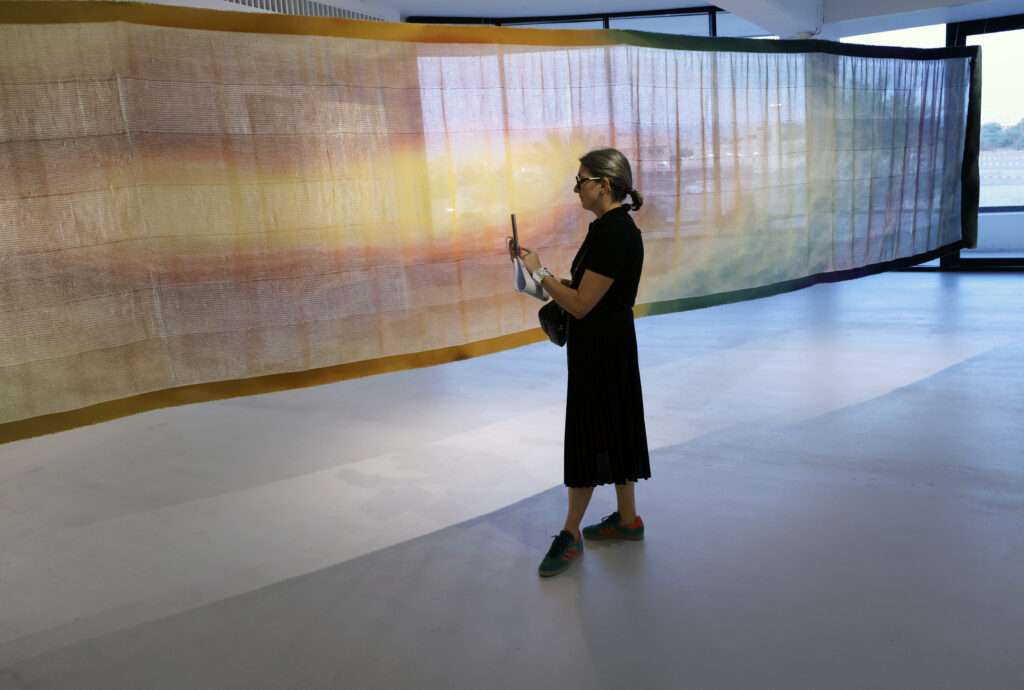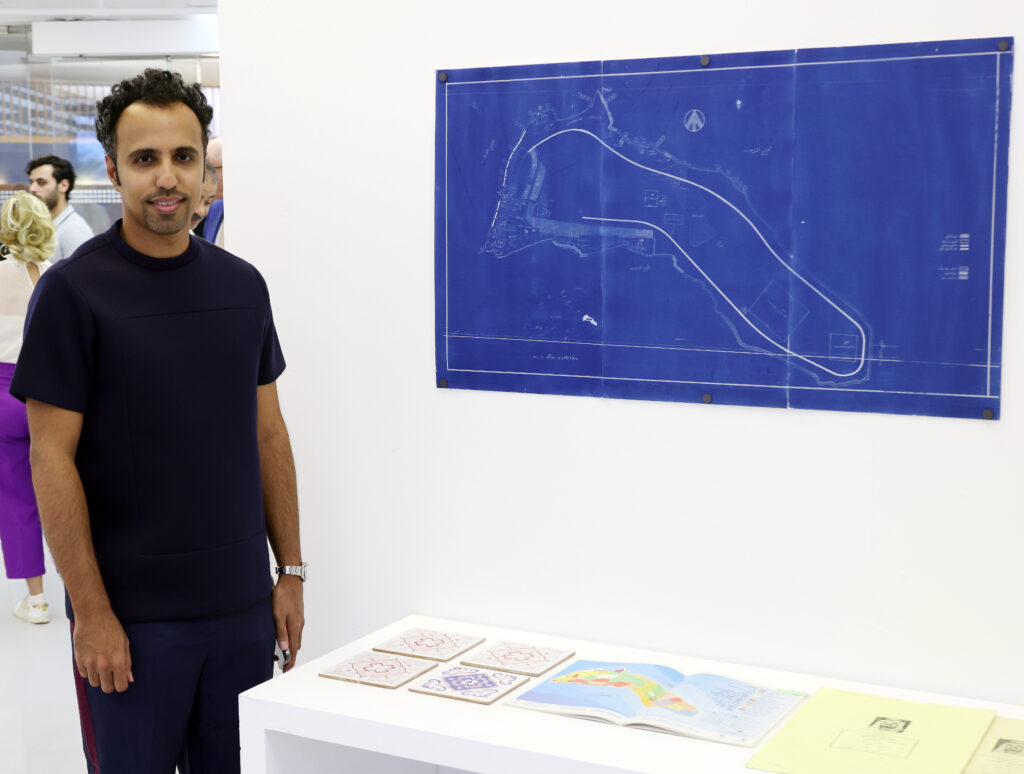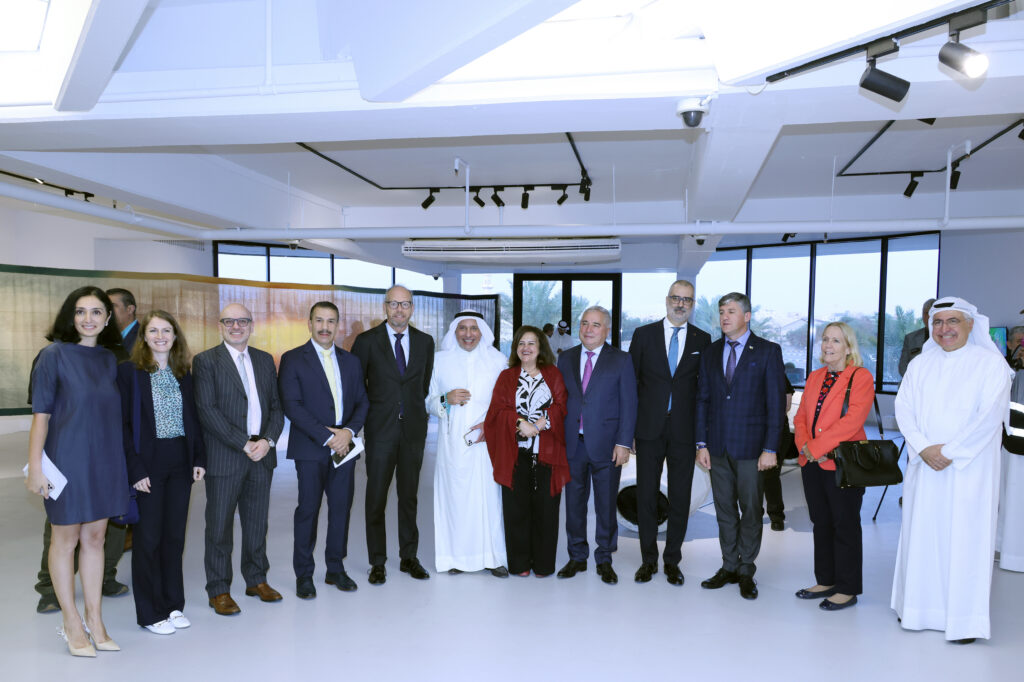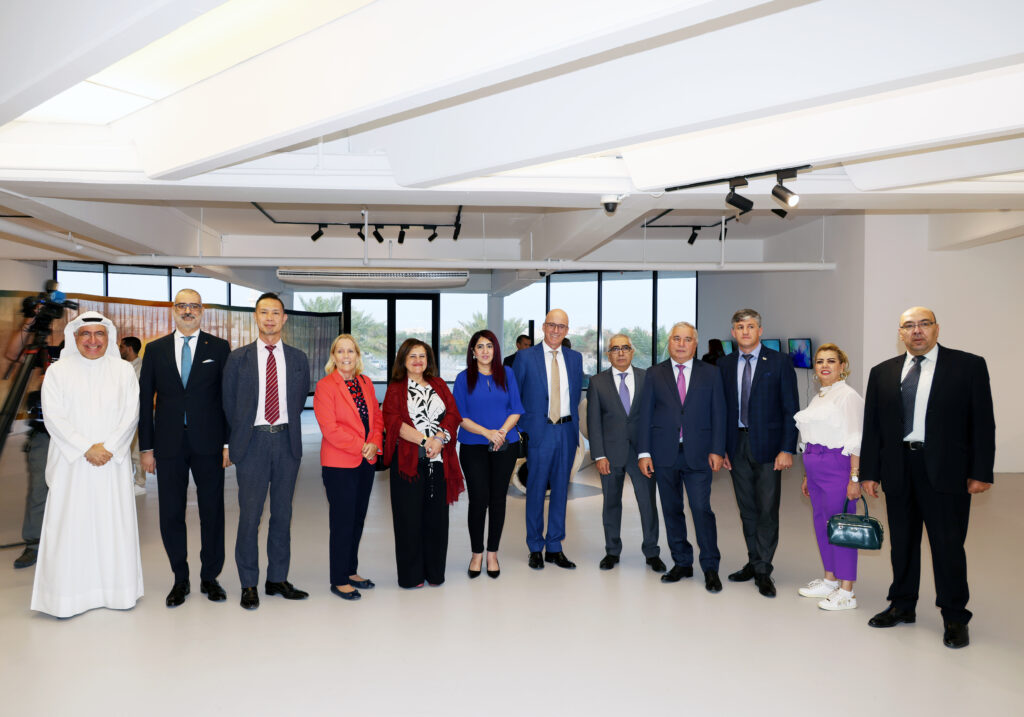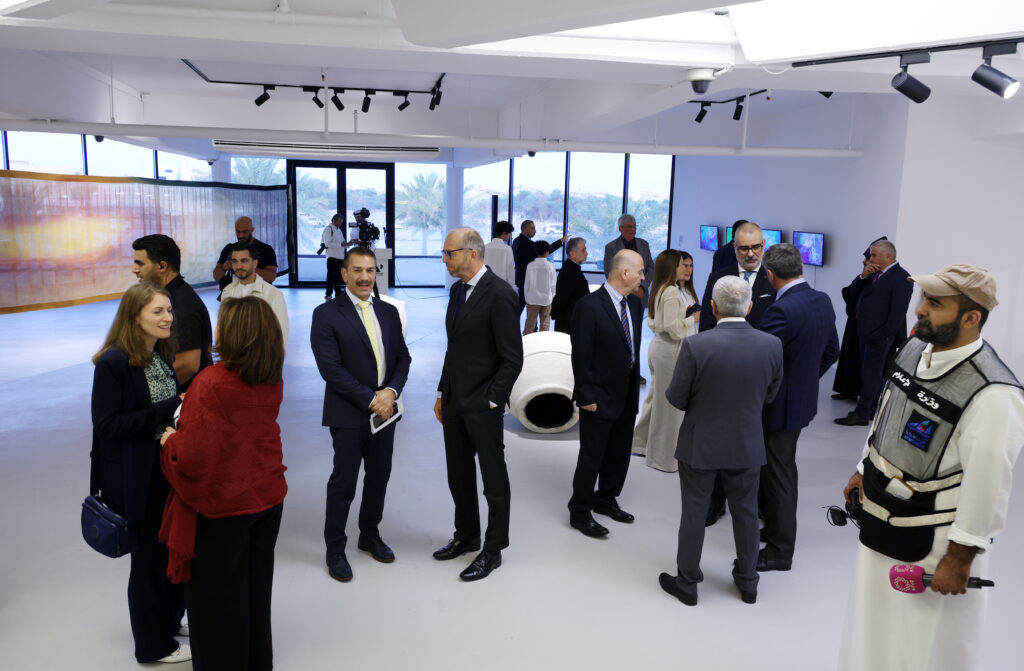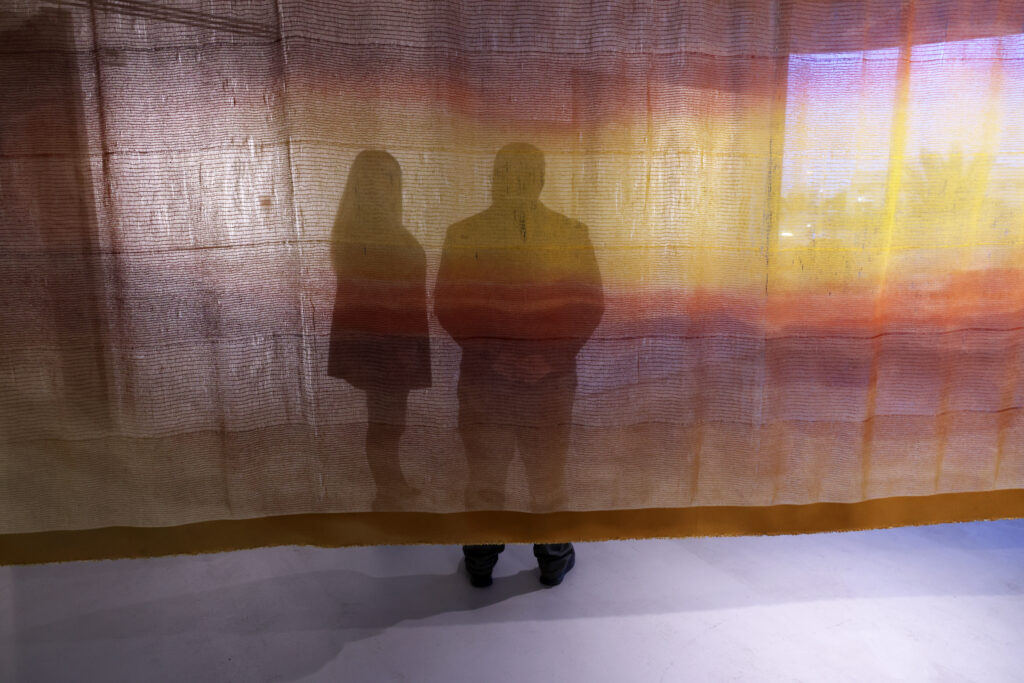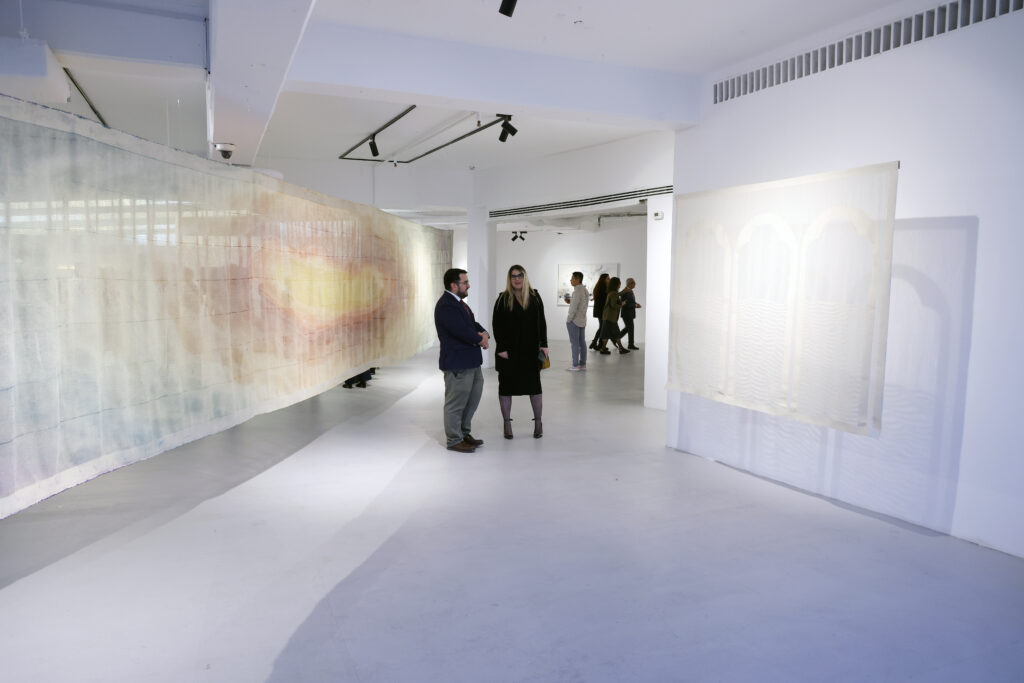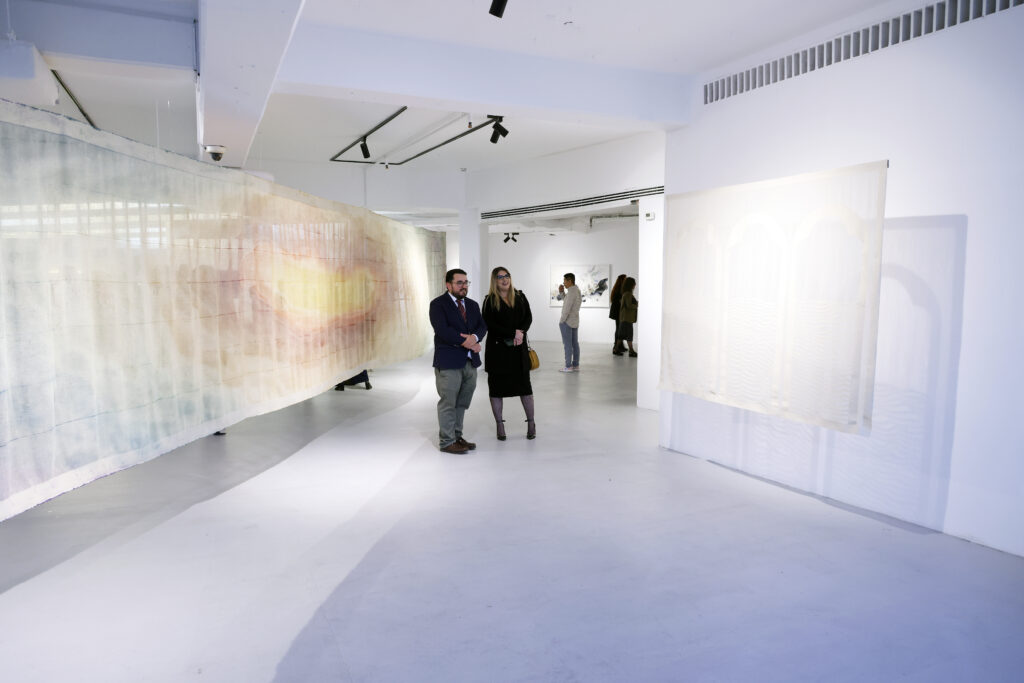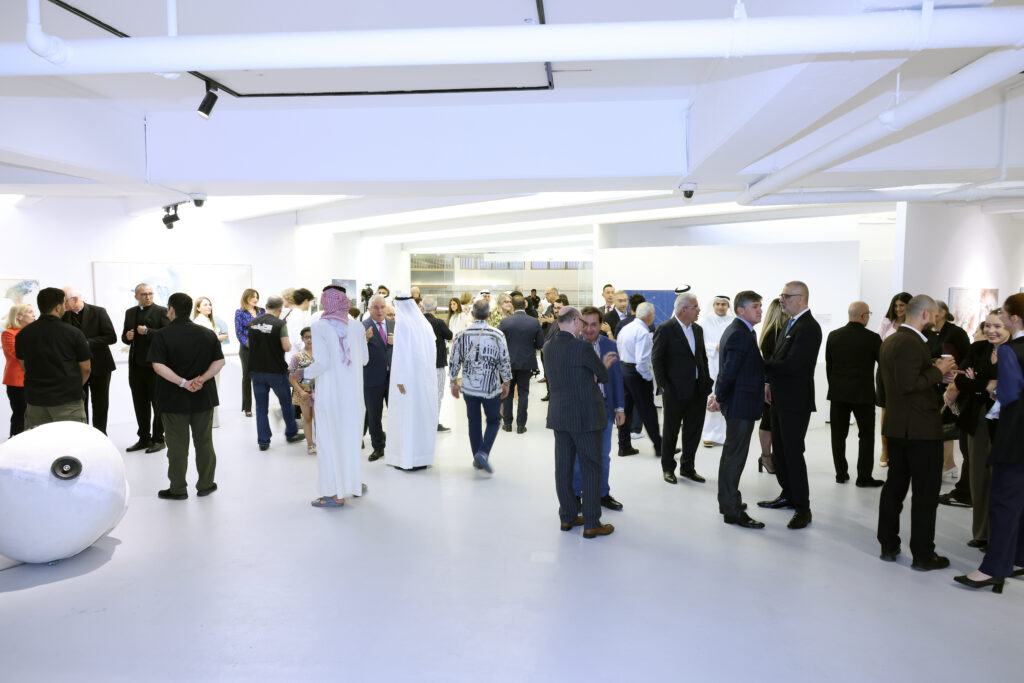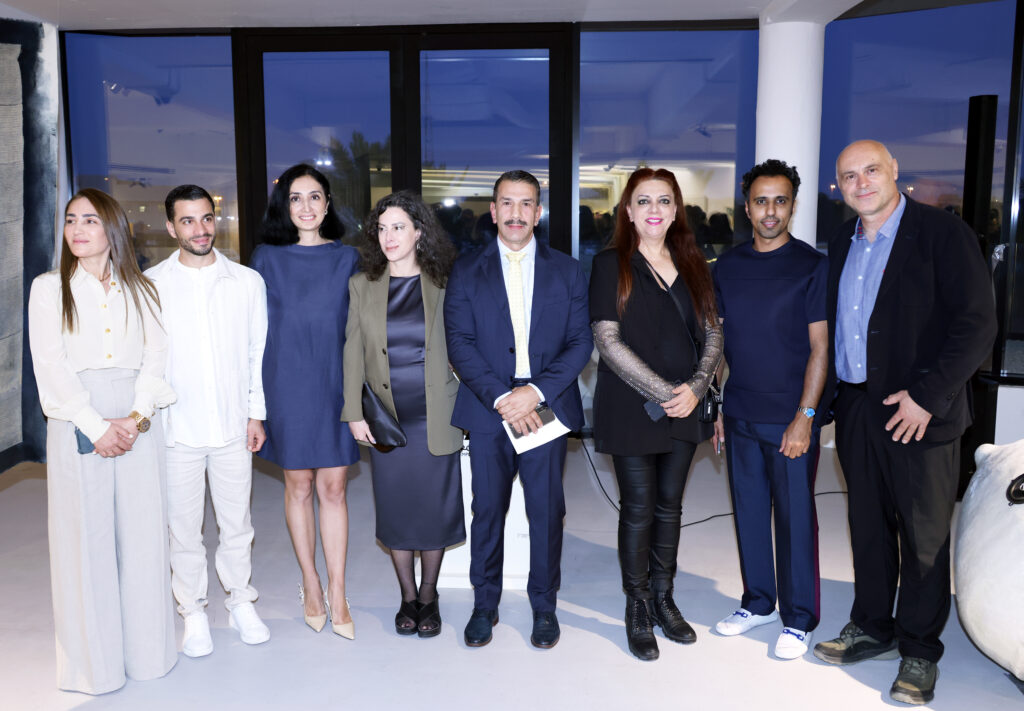Islandic Parallels: Transformed Landscapes From One Island To Another
Exhibition Dates
- April 30, 2024
- May 30, 2024
Artist / Curator
- Rania Abulhasan ( Kuwait ), Mohammed Alkouh ( Kuwait ), Klitsa Antoniou ( Cyprus ), Constantinos S. Contantinou ( Cyprus ), Melita Couta ( Cyprus ), Panayiotis Doukanaris (Cyprus ),Nicos Philippou ( Cyprus ),Mohammad Shaaf ( Kuwait ), Lefteris Tapas ( Cyprus ), Maria Trillidou ( Cyprus ), Marilena Zackheos ( Cyprus )
Rania Abulhasan ( Kuwait ), Mohammed Alkouh ( Kuwait ), Klitsa Antoniou ( Cyprus ), Constantinos S. Contantinou ( Cyprus ), Melita Couta ( Cyprus ), Panayiotis Doukanaris (Cyprus ),Nicos Philippou ( Cyprus ),Mohammad Shaaf ( Kuwait ), Lefteris Tapas ( Cyprus ), Maria Trillidou ( Cyprus ), Marilena Zackheos ( Cyprus )
The binational group exhibition Islandic Parallels: Transformed Landscapes, From One Island to Another is presented from 30 April to 30 May 2024 at Contemporary Art Platform CAP in Kuwait.
Under the patronage of His Excellency the Ambassador of Cyprus in Kuwait Michael Mavros, this contemporary art exhibition is organized by Klitsa Antoniou (Cyprus) and curated by Maria Photiou (Cyprus) and George Lazoglou (Cyprus). It features works by the following Kuwaiti and Cypriot artists: Rania Abulhasan (Kuwait), Mohammad Alkouh (Kuwait), Klitsa Antoniou (Cyprus), Constantinos S. Contantinou (Cyprus), Melita Couta (Cyprus), Panayiotis Doukanaris (Cyprus), Nicos Philippou (Cyprus), Mohammed Sharaf (Kuwait), Lefteris Tapas (Cyprus), Maria Trillidou (Cyprus) and Marilena Zackheos (Cyprus).
The artworks in Islandic Parallels make historical, cultural and environmental parallels between the countries of Cyprus and Kuwait with a focus on the Kuwaiti island Failaka, the name is believed to have originated from the Ancient Greek «φυλάκιο» meaning “outpost.” Both Failaka and Cyprus are marked by histories of interculturalism with significant strategic and commercial importance. Both have been influenced by the diverse civilizations and cultures that have inhabited them over the centuries.
According to Greek historians Strabo and Arrian, Alexander the Great himself ordered that Failaka be called ‘Ikaros’ due to island’s size and shape, which resembled the Greek island Ikaros in the Aegean Sea. As the ruins excavated in modern era reveal, it became part of the Hellenistic world in the 4th century BC, just a little later than Cyprus. In the modern era, conflicts and war have left scars on the body of the land as well as the souls of its inhabitants. The 1990 invasion of Kuwait resulted in the depopulation of Failaka’s residents. Today, parts of Failaka resemble Cyprus’s Buffer Zone and the Famagusta ‘ghost’ town left uninhabited since the 1974 invasion of Cyprus. When strolling along the deserted areas of the two islands, one feels like time has stopped: there are abandoned houses and vehicles, and ruins from the time of the war.
The artists participating in this exhibition actively seek and respond to the interaction of natural phenomena and human activities. They rediscover their own landscapes by reflecting and assembling parallels of different territories. The projects offer new perspectives for understanding the critical issues of social justice and environment. Exploring the theme of the Islandic Parallels, the exhibited works highlight their transformed landscapes within our global and local political history and natural environment. The artists’ creative observations of the various ecosystems (sea, desert, island and mountain) together with the personal local experiences bring to light a sense of resilience that shows an optimism for an alternative future.
Melita Couta presents via her ceramic sculptures “Observatories”, a series of monochromatic, vertically assembled structures, that act as models for larger architectural constructions. They point to fortresses, observatories, and nests where one may watch from the safety of the inside space, the expanse of land, sea and sky in the distance. Couta is thus interested in the ambiguous status of towers as structures of observation and means of communication, historically giving shape to the desire to protect oneself against what is beyond as well as exercising control over what is inside.
Kuwaiti artist Rania Abulhasan articulates in her Tranquillity series the settings and rhythms that she encounters on a daily basis serving as inspiration for her artwork. She interprets her surroundings onto canvas or paper in a manner that captures their essence, simplifying them before giving them a fresh look. No matter what she’s painting, it all begins with a tactile exploration of her surroundings and a creative dialogue between paint and canvas. Combining landscapes while exploring nature, traversing cityscapes, and witnessing human interaction with the environment, her work is informed by her embodied experience.
Mohammed Alkouh’s work Failaka is a Beautiful Island is an ongoing visual exploration which started in 2016 and is continuing to the present documenting Failaka Island’s post-oil era architecture and landscape. Enriched with history from Dilmun, the Kassites, and ancient Greeks to its modern inhabitants, the project unveils the final layer of the island’s story. Following the 1990 invasion, Failaka became a temporal relic, its inhabitants displaced to Kuwait’s mainland. His work offers insights into the artist’s research methodology, featuring visual mapping and found objects akin to archaeological discoveries. These artifacts, echoing the islanders’ absence, evoke poignant narratives of loss and resilience in Failaka’s evolving story.
Klitsa Antoniou’s installation Hydor_is_Land (2023) alludes to a location of a coastal landscape or a seascape and reveals the vastness of the underwater space, which is characterized by alternating transparency and material intensity. It explores the invasion of alien species on islandic coasts, offering a metaphorical analogy with military invasions pertinent to the history of the two islands. Antoniou’s series of drawings Horizons born out of Silence (2014-2015), in which you have the feeling that you are passing through open space at high speed only to be interrupted by signifiers of an unspecified trauma. Abandoned areas, silent paths, locked houses and barbed wire – a feature that is more than familiar to Cyprus’ geopolitical landscape – create a haunted environment.
Constantinos S. Constantinou, in his photographic work The Green Line, negotiates his relationship of his home space: the village where he grew up within the boundaries of the ‘the buffer zone’ or ‘no man’s land,’ that divides the island. The sense of space is shaped by the pressure and limitations of the boundaries that cut into the landscape, creating ghost towns and abandoned villages, untrodden hills and mountain peaks. The artist’s gaze creates the feeling of unreachability of a place delimited by barbed wire, mined areas, and military presence that turns the landscape into an inaccessible and forlorn place for all people, whether native or not.
Panayiotis Doukanaris’ work addresses the notion of collective and individual trauma and its relationship with identity and memory. Doukanaris developed a unique and meticulous process where he gradually removes one by one the threads of the canvas, leaving behind different intricate patterns. By removing matter, Doukanaris essentially adds a new dimension to the work by exposing the materiality of the canvas that is usually misconceived as the mere support of the painted image. The traces left behind become a visual testimony of the poetic event that took place – an event whose distractive energy forces a change; the scalpel that punctures and dissects the flesh of the surface and the needle that carefully de-threads the weaved threads.
Mohammad Sharaf work “Contemporary Archaeology” is photography project that explores the abandoned landscapes and forgotten relics of Kuwait’s Failaka Island. Inspired by a childhood dream, the artist captures the island’s rich history through intricate details and patterns, revealing the remnants of recent human activity.
Following the Iraqi invasion of Kuwait in 1990, Failaka’s once vibrant community was forced to leave, transforming the island into a desolate environment. The artist’s emotional journey reflects on the island’s tumultuous history and the echoes of lives lost, inviting viewers to discover the untold stories of Failaka’s past.
Lefteris Tapas works Archipelago (2021) and Events in the life of Earth and Sky carry a poetic interpretation of Cyprus and its connection with life through landscapes of the sky and sea. Lefteris Tapas brings a profound knowledge of history and philosophy as he deals with collective trauma through the portrayal of his country not as a divided land but as a scattering archipelago composed of natural elements. The island installation is made entirely of pulp, graphite and rare natural earth pigments mined from various quarries of the island. Cyprus as an archipelago of islets becomes a metaphor for diversity, hope and peace that abolishes any constraints of boundaries whether these form inside the human soul or in the outside world.
Maria Trillidou explores the hybridism and transformation observed in the biogeological cosmos in relation to contemporary geopolitics, which revises the understanding of what is ‘Natural’ and our place within it. In-between painting and drawing, her practice holds carnivorous plants, chthonic beings and tentacular creatures, which are not viewed as rare phenomena but as necessary environmental adaptations. On the threshold of being poisonous or poisoned, dangerous or endangered, they allude to creatures of an undefined taxonomy and chronology.
Using copper alloy as the main pigment, her series of drawings titled ‘Native Ores’, include references of Cypriot endemic species merging with references on metals such as Copper and Asbestos, characterizing the soil composition of the island. From biological to geological, organic to inorganic, elements merge, passing from one state to another, evoking a constantly evolving co-existing system.
In Arizona, CY photographer Nicos Philippou and poet Marilena Zackheos combine visual and textual material forming connections between Cyprus, Arizona, and even other unexpected places. Stories of trauma and ecological destruction are articulated via an empathetic link between similarly lived experiences. The desert and cacti imagery allude to un/familiar terrain that unsettles notions of Cyprus as an edenic and monocultural island. Moreover, the photographs and poems, in accordance with Deleuze and Guattari’s nomadic thinking, engage in a curative remapping of Cyprus, Arizona, and other spaces, even Failaka, where one may find similar hardship and resilience.
BIOGRAPHIES
Rania Abulhasan is a Kuwaiti multi-disciplinary artist. Her artwork is strongly influenced by her experience in fashion and product design: she emphasizes life and movement, using shapes and colours to express her ideas and communicate her message. Her work brings a sense of calm and serenity to the viewer.
She professionally works in Art and Design since 1998. Rania holds a bachelor’s degree in fine arts from The New School at Parsons School of Art and Design, Paris & New York. She majored in Fashion Design while minored in Product Design at Parsons. Her passion for art and design continued while attending a fine arts program at the Ecole des Beaux Arts in Paris. Throughout her studies, Rania worked with many influential artists and designers in New York, Paris and Milan.
Mohammed Alkouh is a Kuwaiti Photographer, whose work encompasses analog photography, drawings, archival materials, and hand-colored black and white photographs. Alkouh finds himself continually returning to the liminal space in-between the past and present – where his imagery is cast against a transient reality. He unearths his deeper and unconscious gravitation to the fragmented memories and decaying structures around him.
Alkouh has participated in Local and international exhibitions, Photo Festivals and biennales and took part in several residencies and his work has been published in several books and publications. Among the solo exhibitions he has staged are Tomorrow’s Past at the Contemporary Art Platform (CAP), Kuwait, in 2014, and a year later, Four Hands Can’t Clap at Sultan Gallery, Kuwait. Group exhibitions include the 17th International Architecture Exhibition of la Biennale di Venezia – Kuwait Pavilion (2021). The traveling exhibition The Place I Call Home by The British Council (2019);
Contemporary Photography from the Arab World, American University Museum in
Katzen Arts Center – Washington DC (2018). “The Sixties’‘, The Tropen museum – Amsterdam (2015). In 2019 Alkouh was awarded a Grant by AFAC and took part in the Arab documentary Photography Program. In 2023 he was awarded Sheikh Saoud Al Thani photography Project Award, Tasweer Photo Festival Qatar for his project “Failaka is a beautiful Island”.
Klitsa Antoniou studied at Wimbledon School of Art and Saint Martin’s School of Art and Design [B.F.A.] in London, at Pratt Institute [M.F.A.] and New York University [D.A.] in New York. Since 2014 she has held a PhD in Theory and Philosophy of Art. She is the founder and coordinator of Cut Contemporary Fine Arts Lab since 2019. She has presented more than 20 solo exhibitions internationally including Porvoo Art Hall, Finland 2022, De Skyddssökande, Norrkoping, Sweden 2019, MIET, Thessaloniki 2012, Exhibit Gallery, Barbican, London, 2010, Stoa Gallery, Finland 2006, Eastlink Gallery, Shanghai, China 2005, Chinese European Art Centre, Xiamen, China 2004, and has exhibited in major museums, galleries and art institutions worldwide including Viridien Chronicles, Apollonia Art Exchanges, Strasburg, France 2023, Visual Intrusion, Biennale of the Art Colony Galichnik, Mala Stanica, Republic of North Macedonia 2021, The Right to Silence? Anya and Andrew Shiva Gallery, Jonh Jay, New York, 2020, Experimental Storytelling, Norrköping City Museum 2019, (meta)fourisms, Spazju Kreattiv, Valletta, Malta 2018, Is this the Time for Art? Modern Art Museum Orebro Konstall, Sweden 2017, Fusion, Nanjing Museum of Art, China 2017, Il Diritto Al Futuro, The Museum of the Arts of the 20th and 21st Century, St Petersburg, Russia 2017, so close yet so far away…, Facts don’t Speak for themselves-Art on Migration and Borders, Skånes konstförening, Malmö, Sweden 2016. In 2019 she represented Malta at the Venice Biennale with the work Atlantropa-X.
Constantinos Sophocles Constantinou (b. 1990) is a photographer, and filmmaker, living and working in Cyprus. He studied at the University of West Attica, Greece, where he is currently enrolled as a PhD candidate. Constantinou has created work in Cyprus, Greece, Turkey, Syria, Romania, Guyana and India. His work has been exhibited in museums, festivals, and art galleries in Europe and the US. He was awarded first prize for “Young Greek Photographers” exhibition at Kythera Photographic Encounters for his project: “The Green Line”, and the Juror Award of Merit in the Street Photography/Documentary category from the Grand Prix de la Découverte Paris.
Melita Couta studied sculpture at Central St. Martins College of Art and Design and the Slade School of Fine Art in London. She has many solo and group exhibitions in Cyprus and abroad such as in Ostend (Beaufort 04 – Triennale of Sculpture), Brussels (Agorafolly Outside/ Inside), Paris (Chypre: L’art au Present, Gallery Espace Commines), London ( Somatopia: Mapping Sites, Siting Bodies, The Hellenic Centre), Lido / Venice (Openasia- 7th Exhibition of Sculptures and Installations) etc. In her work, she uses artistic practices as well as collaborative processes to raise questions around issues of identity, narrative, collective and personal memory. Since 2016, she has been teaching as a Specialist Scientist at the Department of Fine Arts of the University of Nicosia.
Panayiotis Doukanaris, studied Fine and Applied Arts at the Aristotle University of Thessaloniki (2015) and then continued his studies at the Birmingham City University, where he acquired his Master in Fine Arts (2016). Since 2016, Doukanaris has worked as an art teacher in public primary and secondary schools and universities. In 2019, he had his first solo exhibition in Nicosia, and the year after he was selected to participate in a six-week art residency organized by the European Investment Bank, held in Luxembourg. He participated in numerous group exhibitions in Europe, some of which are: ADP Retrospective, EIB Institute, Luxembourg; Contextile 2022, Contemporary Textile Art Biennial, Guimaraes; Belonging, The Hunt Museum, Limerick; I miss the land but does the land miss me? Art Seen Contemporary Gallery, Nicosia; UKYA, Bjcem Biennale of Young Creators from Europe and Mediterranean, Nottingham. Doukanaris’ works belong to private and public collections such as: EIB Institute Art Collection; Cyprus National Collection of Contemporary Art.
Nicos Philippou is a photographer with a strong interest in Cypriot topography and material culture. He has participated in several exhibitions in Cyprus and abroad. In 2010 he co-curated the exhibition Reenvisioning Cyprus and co-edited the volume with the same title. In 2012 he participated in the exhibition Sense of Place/ European Landscape Photography at the BOZAR in Brussels and in at Maroudia’s, a component of the major NiMAC exhibition Terra Mediterranea-In Crisis. In 2015 his book Coffee House Embellishments was shown in The PhotoBook Exhibition at the Benaki Museum in Athens. He is the co-editor of Photography and Cyprus: Time, Place, Identity. In 2016 NiMAC hosted his solo exhibition Sharqi and published a photobook with the same title. In 2022 he participated in the photographic exhibition In the Sea of the Setting Sun at the State Gallery of Contemporary Art- SPEL. His writings on photography, vernacular culture and Cypriot Identity have been published in journals, art magazines and collective volumes whereas his photography has been showcased in periodicals like photographies and Exposure. He also writes and publishes poetry. His first chapbook of haikus, titled Scrambler, was published in 2017. He is lecturing at the Communications Department of the University of Nicosia.
Mohammad Sharaf is a Kuwait-based designer and the director of Sharaf Studio. He holds a bachelor’s degree in marketing and another bachelor’s degree in graphic design. He later earned his MFA from the School of Visual Arts in New York. He has always been interested in social and political symbolism and specializes in visual identity, typography and editorial design. In 2011, he started a series of works entitled “Visual Reactions” which he used to communicate his views on rising local, regional, and international issues. In 2018 “The Cemetery of Banned Books,” was a public art intervention created to protest against censorship in Kuwait.
He continues to expand his use of mediums, creating bold, powerful, and thought-provoking visuals alongside themes that reflect on current society.
Lefteris Tapas, lives and works in Limassol. In 2019, his fifth solo exhibition titled “Archipelago” was exhibited at CAN Christina Androulidaki Gallery in Athens and in 2021-2022, the Nicosia Municipal Arts Centre (NiMAC) held a large retrospective exhibition of his work titled “The Day Begins at Night”. Tapas’ work delves into profound themes of identity and transformation, inviting viewers on a journey of self-realization. His recent work carries a poetic interpretation of Cyprus and its connection with life, through landscapes of the sky and sea. With profound knowledge of history and philosophy, he addresses collective trauma by depicting his country not as a divided land but as a scattering archipelago composed of natural elements. His work, primarily handmade paper cuttings, are unique examples of a slow, painstaking process that combines the concept of craftsmanship with the pursuit of spirituality. Lefteris Tapas is represented by CAN Christina Androulidaki Gallery in Athens.
Maria Trillidou was born, lives and works in Nicosia, Cyprus. She holds the titles of Bachelor of Fine Arts from the University of the Arts in Philadelphia-USA, graduating with a Summa Cum Laude and a Master of Experimental Art from Basle School of Art and Design in Basle-Switzerland. Her more recent studies in Biology and Medicine have reformulated her cosmotheory about what’s organic in relation to the inorganic, something which is reflected upon her practice which is mainly focusing on drawing. She has realized 12 solo shows in Cyprus and participated in group shows and international Biennales in Cyprus and abroad. Among them the Drawing Biennale at Osten and Larnaca Biennale.
Marilena Zackheos grew up in Moscow, Beijing, Nicosia, Geneva, and New York City. She studied philosophy, creative writing, and English literature in the USA and the UK. She holds a PhD in English from George Washington University, Washington D.C. She has published on postcolonial literary and cultural studies, psychoanalysis and trauma, gender and sexuality. She is co-editor of Vile Women: Female Evil in Fact, Fiction, and Mythology (2014), From Cyprus With Love (2016) and Education in a Multicultural Cyprus (2017). Her poems have been translated into Greek, Turkish, Serbian, Albanian, Spanish, and German. She is the author of the full-length book of poetry “Carmine Lullabies” (A Bookworm Publication 2016).

